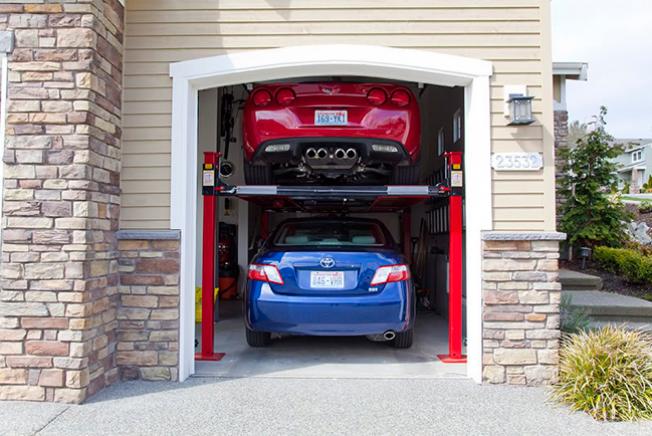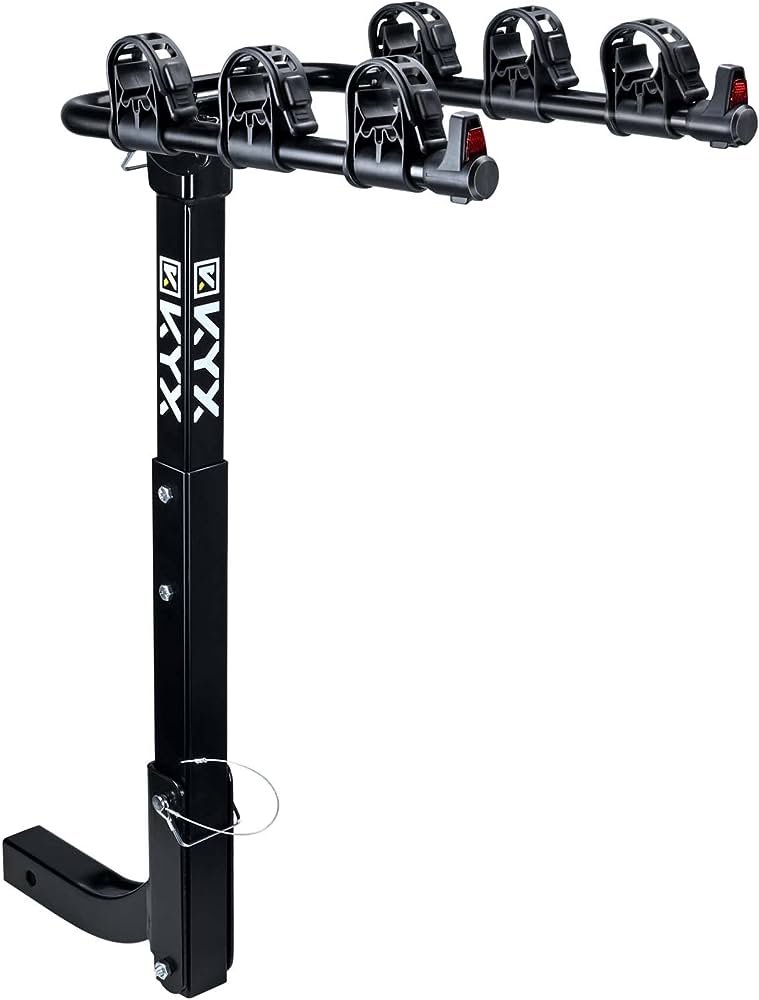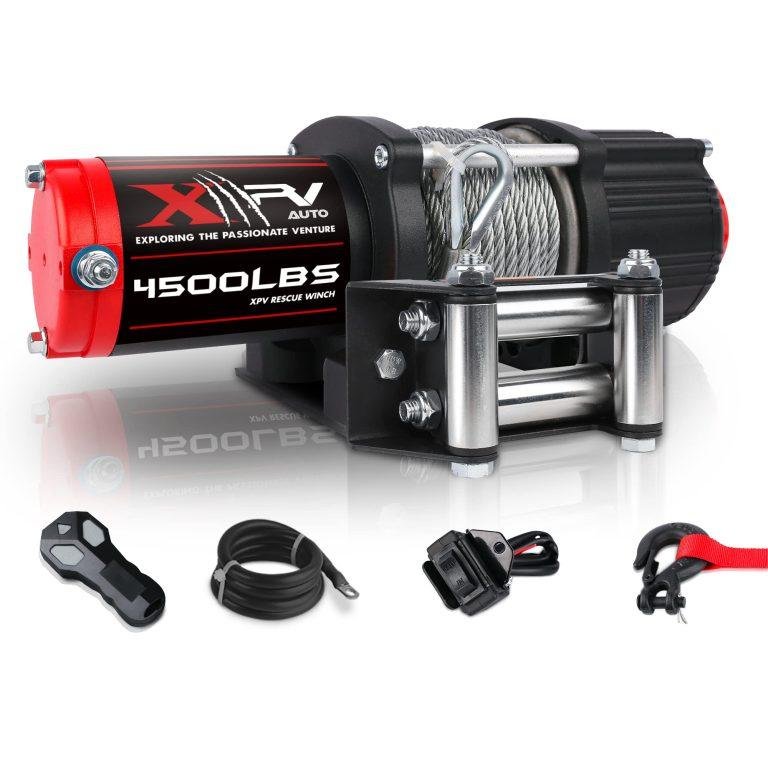To accommodate a car lift, you typically need a ceiling height of at least 12 feet. If you’re considering installing a car lift in your garage or workshop, it’s important to assess the available ceiling height.
Generally, a minimum ceiling height of 12 feet is required to accommodate a car lift effectively. This allows sufficient clearance for the raised vehicle and ensures safe and efficient operation. By ensuring your ceiling meets this requirement, you can make sure you have enough space to install and use a car lift without any restrictions.
Whether you’re a car enthusiast or a professional mechanic, having the right ceiling height is essential to successfully incorporate a car lift into your space. So, be sure to assess the height of your ceiling before investing in a car lift for your garage or workshop.

Credit: www.garageliving.com
Importance Of The Right Clearance For Your Garage
The right clearance for your garage is crucial when considering a car lift. It is important to know how tall of a ceiling you need to accommodate the lift to ensure proper functionality and safety. Don’t overlook this vital detail!
Ensuring Proper Clearance For Your Car Lift
A car lift can be a valuable addition to your garage, providing convenience and efficiency for vehicle repairs or storage. However, installing a car lift requires careful consideration of the ceiling height in your garage. Having the right clearance is crucial to ensure safe and effective use of the car lift.
In this section, we will explore the importance of the right clearance for your garage and the factors to consider when determining the ceiling height.
Factors To Consider When Determining Ceiling Height:
When determining the ceiling height required for your car lift, several factors need to be taken into account. These factors include:
- Lift design: Different types of car lifts have different height requirements. For example, a two-post lift typically requires a higher ceiling compared to a scissor lift. It is essential to consult the manufacturer’s specifications to determine the specific clearance required for the lift you intend to install.
- Vehicle height: Consider the maximum height of the vehicles you will be lifting. Measure the tallest vehicle you plan to work on or store in your garage. Add this height to the height of the car lift itself and ensure that the ceiling height is sufficient to accommodate both.
- Safety regulations: Compliance with safety regulations is crucial when installing a car lift. Local building codes may specify the minimum required ceiling height for residential garages. Ensure that your chosen lift and the clearance you provide adhere to these regulations to ensure safe operation.
Benefits Of Having The Right Clearance In Your Garage:
Having the right clearance for your car lift offers several benefits, including:
- Unobstructed lifting: Sufficient ceiling height allows you to lift vehicles smoothly without any obstructions. It ensures that the lifted vehicle can be raised to the desired height without hitting the ceiling or any hanging objects.
- Enhanced safety: Adequate clearance minimizes the risk of accidents and injuries during the lifting process. It provides enough space for technicians or vehicle owners to work comfortably and maneuver around the vehicle without the risk of bumping into the ceiling or other obstacles.
- Flexibility and versatility: With the right clearance, you can accommodate a wider range of vehicles in your garage. Whether you need to lift a small car or a larger suv, having sufficient ceiling height gives you the flexibility to service or store various vehicle sizes.
- Future-proofing: By ensuring the proper clearance, you are preparing your garage for future needs. If you plan on purchasing taller vehicles or upgrading to a different type of car lift in the future, having sufficient ceiling height will save you from the hassle and expense of making adjustments later on.
Ensuring the right clearance for your car lift is essential to maximize its functionality and safety. Consider the lift design, vehicle height, and safety regulations when determining the ceiling height in your garage. The benefits of having the right clearance include unobstructed lifting, enhanced safety, flexibility, and future-proofing your garage.
Invest time in understanding your garage’s dimensions and consult the manufacturer’s recommendations to ensure a hassle-free and efficient car lift installation.
Understanding Car Lift Dimensions And Requirements
Car lift dimensions: learn how tall of a ceiling is needed for a car lift and meet the lift’s requirements for safe usage. Understand the necessary space and dimensions to accommodate a car lift in your garage or workshop without any hassles.
If you’re considering getting a car lift for your garage or auto repair shop, it’s essential to understand the dimensions and requirements. This will ensure that you choose the right car lift that fits your space and meets your needs.
Types Of Car Lifts And Their Dimensions
When it comes to car lifts, there are two main types to consider: two-post car lifts and four-post car lifts. Each type has its own dimensions and requirements. Let’s take a closer look at them:
Two-Post Car Lifts
- Two-post car lifts are a popular choice for vehicle maintenance and repairs. They feature two columns that support the lifting arms.
- These lifts require less space compared to four-post lifts, making them ideal for smaller garages or workshops.
- The average height of a two-post car lift is around 113 inches or 9.4 feet.
- Keep in mind that you may need additional height clearance for overhead doors to ensure smooth operation.
Four-Post Car Lifts
- Four-post car lifts are known for their stability and versatility. They consist of four columns with horizontal runways for the vehicles to drive onto.
- These lifts provide excellent storage options, as you can leave a vehicle elevated for extended periods.
- The average height of a four-post car lift is around 105 inches or 8.8 feet.
- You also need to consider the height of the vehicle you’ll be lifting, as it will affect the overall required ceiling height.
Factors To Consider When Choosing A Car Lift
When selecting a car lift, several factors should influence your decision. Here are some key considerations to keep in mind:
Maximum Lifting Height
- The maximum lifting height refers to how high the car lift can raise a vehicle off the ground.
- Consider the types of vehicles you’ll be working on and choose a lift that accommodates their height.
- Ensure that the maximum lifting height of the car lift matches or exceeds the height of the tallest vehicle you plan to lift.
Minimum Required Ceiling Height
- The minimum required ceiling height is an important consideration to ensure proper installation and safe operation of the car lift.
- Measure the height from the floor to the ceiling in your garage or workshop to determine the minimum requirement.
- Take into account the height of the lift, the vehicle you’ll be lifting, and any additional overhead clearance needed.
Understanding the dimensions and requirements of car lifts is crucial before making a purchase. Consider the type of lift that suits your needs and available space, as well as factors like maximum lifting height and minimum required ceiling height. With these considerations in mind, you’ll be well-equipped to choose the right car lift for your garage or workshop.
Determining The Minimum Ceiling Height For A Car Lift
Determining the minimum ceiling height for a car lift depends on the type of lift and the size of the vehicle. Generally, a ceiling height of at least 12 feet is recommended to accommodate most car lifts and provide enough clearance for the vehicle.
Are you considering installing a car lift in your garage or automotive shop? If so, one crucial factor to consider is the minimum ceiling height required for the car lift to function properly. To help you determine the right height, let’s go through the key aspects you need to consider:
Calculating The Overall Height Of The Car Lift:
To ensure that the car lift fits comfortably in your space, you’ll need to calculate its overall height. This involves taking into account multiple factors such as:
- The height of the columns: Measure the height of the columns from the base to the top. This will vary depending on the specific car lift model.
- The height of the vehicle: Take into consideration the maximum height of the vehicles you plan to lift on the car lift.
- The height of the lifting arms: Consider the additional height the lifting arms add when the vehicle is raised.
Once you have these measurements, add them together to find the total overall height of the car lift.
Factoring In Extra Clearance For Safety And Convenience:
While calculating the overall height of the car lift is a crucial step, it’s also important to factor in extra clearance for safety and convenience. Here are some reasons why:
- Safety protocols: It’s recommended to have sufficient clearance to allow for proper operation and safety features.
- Ease of use: Having additional headroom provides convenience when entering and exiting the vehicle on the lift.
Recommended Minimum Ceiling Height For Different Types Of Car Lifts:
The minimum ceiling height required for a car lift can vary depending on the type of lift you choose. Here are some general recommendations:
- Two-post car lift: For a standard two-post lift, a minimum ceiling height of around 11-12 feet is typically recommended. This accounts for the overall height of the lift along with some additional clearance.
- Four-post car lift: For a four-post lift, the minimum ceiling height requirement is usually higher, ranging from 12-15 feet. This is due to the additional height of the columns and the lift structure itself.
Remember, these height recommendations are general guidelines, and it’s always best to consult the manufacturer’s specifications for accurate information based on the specific model you intend to purchase.
By calculating the overall height of the car lift, considering additional clearance for safety and convenience, and knowing the recommended minimum ceiling height for different types of car lifts, you can make an informed decision when it comes to choosing the right car lift for your garage or automotive shop.
Ensure you take accurate measurements, and always prioritize safety and practicality. Happy lifting!
Overcoming Height Constraints In Your Garage
Looking to install a car lift in your garage but concerned about the height constraints? Find out the minimum ceiling height you need to accommodate a car lift and overcome this obstacle.
If you have a low ceiling in your garage, it can pose a challenge when it comes to installing a car lift. However, there are several options and modifications you can consider to overcome these height constraints and make the most of your limited space.
In this section, we will explore some practical solutions and alternative lift options to help you find the best fit for your garage.
Options For Garages With Low Ceilings:
- Low-profile car lifts: These lifts are specifically designed for garages with limited overhead clearance. With their lower profile, they can accommodate vehicles even in tighter spaces. Consider these key points when choosing a low-profile car lift:
- Maximum lifting height: Look for a lift that provides sufficient clearance for your needs without exceeding your ceiling height.
- Load capacity: Ensure that the lift can handle the weight of your vehicles.
- Safety features: Opt for a lift with reliable safety mechanisms to ensure stability and prevent accidents.
- Modifying the garage ceiling: If your ceiling is just a few inches too low for a standard car lift, you may be able to make some modifications to increase the clearance. Here are a few options to consider:
- Raising the ceiling: In some cases, you might be able to raise the height of your garage ceiling by removing or relocating existing structures such as ductwork, pipes, or lighting fixtures.
- Installing a drop ceiling: By installing a drop ceiling, you can create extra space between the original ceiling and the car lift, allowing for more clearance.
- Replacing with a shallower joist system: Depending on the structure of your garage, replacing the current joist system with a shallower one could provide the necessary headroom for a car lift.
Considering Alternative Lift Options:
If you find that even a low-profile car lift is not feasible due to extremely limited ceiling height, there are alternative options to consider. These alternatives may not provide the same lifting capacity as a traditional car lift but can still be useful for maintenance and limited repairs:
- Portable car lifts: These compact and lightweight lifts can be a great choice for garages with low ceilings. They are easy to set up and can be moved and stored when not in use.
- Scissor lifts: Scissor lifts are another option for garages with height constraints. These lifts provide a steady platform and require less vertical clearance compared to traditional car lifts.
- Bottle jacks or ramps: If space is extremely limited, bottle jacks or ramps can be practical alternatives for basic maintenance tasks such as oil changes or tire rotations.
Remember, when working with limited height, it is crucial to prioritize safety and stability. Always follow the manufacturer’s instructions and ensure that the lift you choose is suitable for your garage dimensions and vehicle weight.
Tips For Installing A Car Lift In A High-Ceiling Garage
To properly install a car lift in a high-ceiling garage, the minimum ceiling height required will depend on the type of lift. Generally, a minimum ceiling height of 12-14 feet is recommended for a two-post lift, while a four-post lift typically requires a ceiling height of 14-16 feet.
Ensure that you measure the height accurately before installing a car lift to avoid any issues.
Maximizing The Benefits Of A High Ceiling
- A high-ceiling garage provides ample space for installing a car lift, allowing you to capitalize on its benefits. Here’s how you can make the most of your high-ceiling garage:
- Increase vehicle accessibility: With a higher ceiling, you can install a taller car lift, enabling you to work on vehicles of various sizes comfortably. This versatility is especially advantageous if you own or work on different types of automobiles.
- Enhance storage solutions: Utilize the additional overhead space by installing overhead storage systems or shelving units. This way, you can maximize the storage capacity of your garage without using valuable floor space.
- Accommodate large equipment: A high ceiling provides the opportunity to store or maneuver oversized equipment within your garage. Whether you have a recreational vehicle, a boat, or a larger workspace, a high-ceiling garage offers the space required for such equipment.
Ensuring Safety Measures For Taller Car Lifts
- Installing a car lift requires careful consideration for safety. When dealing with taller car lifts in a high-ceiling garage, there are several essential safety precautions to take:
- Verify weight capacity: Taller car lifts typically have a higher weight capacity due to their size. It is crucial to check the lift’s weight limit and ensure that it can accommodate the vehicles you plan to lift. Exceeding the weight capacity can lead to accidents or damage to both the lift and the vehicle.
- Check stability: Taller car lifts are more susceptible to instability if not properly installed or maintained. Regularly inspect the lift for any signs of wear, such as loose bolts or hydraulic leaks. Additionally, make sure to follow the manufacturer’s guidelines for securing and anchoring the lift to ensure stability during use.
- Adequate headroom clearance: The extra height of a taller car lift necessitates sufficient headroom clearance in the garage. Ensure that your garage’s ceiling height allows for the car lift’s full range of motion without any obstructions. Double-check measurements to avoid any potential accidents or damage to the lift or garage structure.
Utilizing Extra Space For Added Convenience
- Besides accommodating the car lift, a high-ceiling garage offers opportunities for added convenience and functionality. Here are some ways to utilize the extra space efficiently:
- Install a mezzanine level: Consider adding a mezzanine level within your garage to create a separate storage area or a workspace above. This additional space can be advantageous for organizing tools, equipment, or even functioning as a small office.
- Create a workshop area: With a high ceiling, you can dedicate part of your garage as a workshop area. Install a workbench, tool cabinets, and additional lighting to create a practical and organized workspace for your car-related projects.
- Utilize vertical storage solutions: Take advantage of the height by incorporating vertical storage solutions, such as wall-mounted racks, hooks, and hanging shelves. This allows you to keep frequently used items easily accessible while optimizing floor space for other purposes.
Remember, a high-ceiling garage provides great potential for maximizing the benefits of a car lift. Just ensure that you prioritize safety measures, adhere to weight limits, and utilize the extra space wisely for added convenience.
Frequently Asked Questions For How Tall Of A Ceiling Do You Need For A Car Lift?
Can A Car Lift Fit In A 10 Foot Ceiling?
Yes, a car lift can fit in a 10 foot ceiling.
What Is The Ceiling Height For A Car Lift?
The ceiling height for a car lift varies, but typically, it requires a minimum clearance of around nine to ten feet. This allows for enough space for the vehicle to be lifted to a comfortable height without the risk of hitting the ceiling.
It is important to measure the ceiling height accurately before installing a car lift to ensure it meets the minimum requirements. Additionally, it is necessary to consider any obstructions or protrusions in the ceiling that may limit the maximum height for the car lift.
Overall, having adequate ceiling height is essential for the safe and efficient operation of a car lift.
How Tall Should A Ceiling Be For A 2 Post Lift?
The ceiling height for a two-post lift should be at least 12 feet. This allows for sufficient clearance to safely lift and lower vehicles. Having a taller ceiling is recommended, as it provides more working space and flexibility. A higher ceiling allows taller vehicles to be lifted without any height restrictions.
It also makes it easier to raise the vehicle fully and perform repairs or maintenance underneath it. Overall, a ceiling height of 12 feet or more is ideal for a two-post lift, ensuring safe and efficient operation.
How Much Garage Height Do I Need For A Car Lift?
To determine the garage height needed for a car lift, measure the overall height of the vehicle while it is elevated. Add this measurement to the clearance height required for the lift. It is recommended to have a minimum ceiling height of 12 feet for a standard car lift.
This allows for proper clearance and maneuverability. Make sure to consider any additional space required for accessories or attachments. Always check the specifications and recommendations of the car lift manufacturer to ensure proper installation and optimal functionality. Planning for adequate garage height is essential to safely operate a car lift and avoid any potential damage or accidents.
Conclusion
The height of the ceiling needed for a car lift depends on various factors, including the type of car lift and the height of your vehicle. If you own a standard car or truck and opt for a two-post lift, a ceiling height of at least 12 feet is generally recommended.
However, if you own a larger vehicle or a commercial truck, you may need a higher ceiling to accommodate a four-post lift. It is important to ensure that there is enough clearance space for the lifted vehicle, taking into consideration the height of the vehicle and any attachments such as roof racks or antennas.
When determining the required ceiling height for a car lift, it is always best to consult with a professional who can provide personalized advice based on your specific needs. Remember to also consider your budget and any local building regulations that may impact the installation process.
By carefully considering these factors, you can ensure that you have the appropriate ceiling height to safely and effectively use a car lift in your garage or auto shop.






